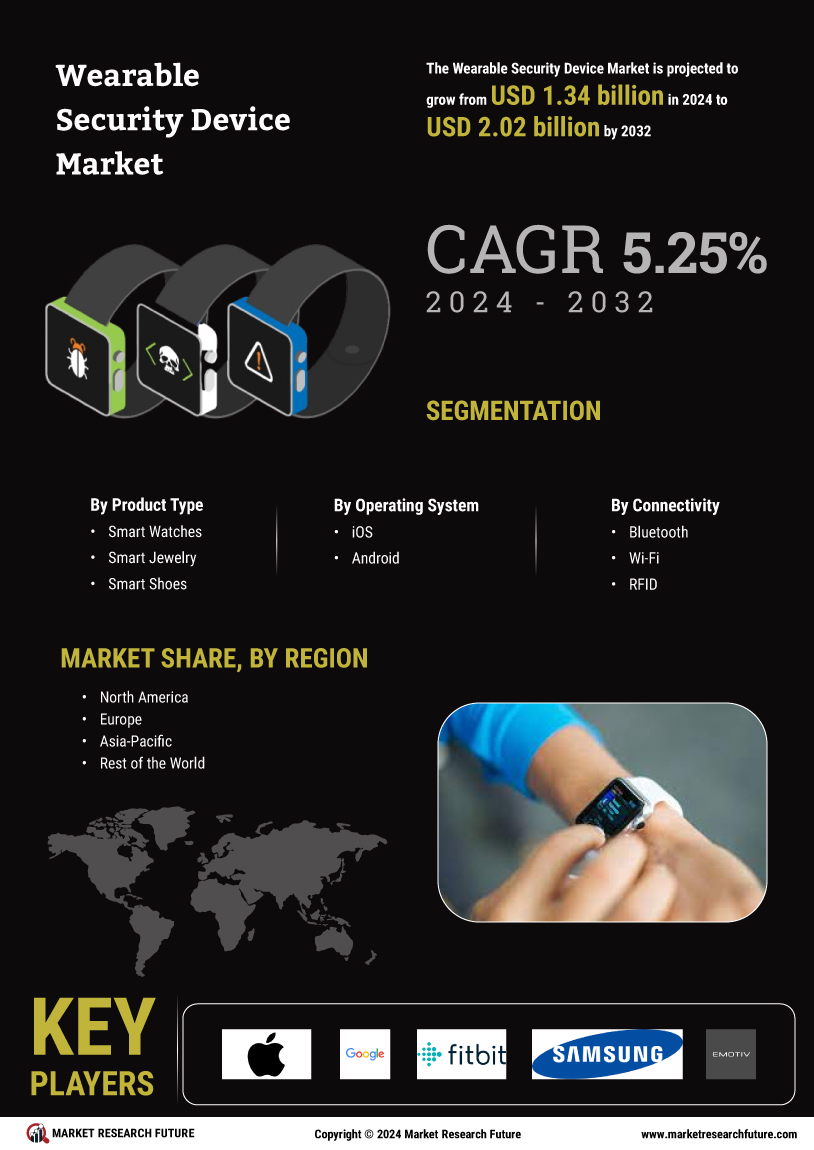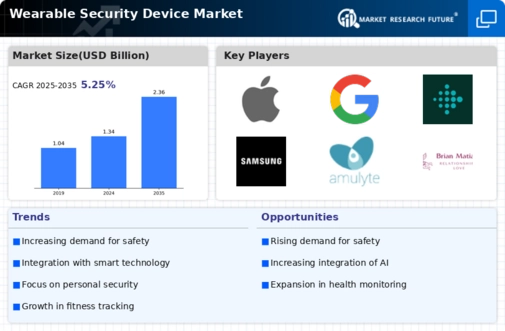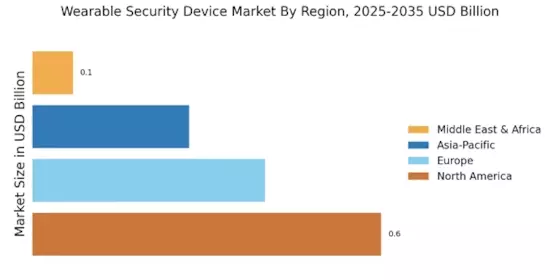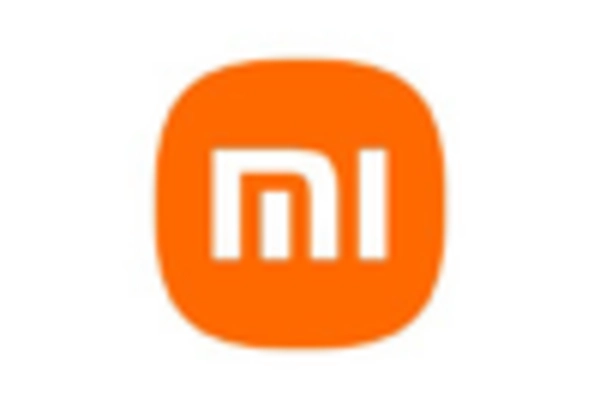Rising Awareness of Health and Safety
There is a growing awareness of health and safety issues that is driving the Wearable Security Device Market. Consumers are increasingly recognizing the importance of personal safety in conjunction with health monitoring. Wearable devices that offer features such as fall detection, emergency alerts, and health tracking are becoming more popular among various demographics, including the elderly and those with health concerns. This trend is supported by data indicating that the health monitoring segment of the wearable market is expected to reach a valuation of over 30 billion dollars by 2026. As consumers prioritize their well-being, the demand for multifunctional wearable security devices is likely to increase, further propelling the Wearable Security Device Market.
Expansion of E-commerce and Online Retail
The expansion of e-commerce and online retail is significantly impacting the Wearable Security Device Market. With the rise of online shopping, consumers have greater access to a variety of wearable security devices, often at competitive prices. This accessibility is encouraging more individuals to invest in personal safety solutions. Additionally, online platforms provide consumers with the ability to compare products and read reviews, which can influence purchasing decisions. As e-commerce continues to grow, it is expected that the Wearable Security Device Market will benefit from increased visibility and sales opportunities. The convenience of online shopping is likely to attract a wider customer base, thereby driving market growth.
Growing Adoption of Smart Home Technologies
The proliferation of smart home technologies is influencing the Wearable Security Device Market. As households increasingly adopt smart devices, there is a corresponding demand for wearable security solutions that integrate seamlessly with these systems. Wearable devices that can communicate with smart home security systems provide users with enhanced control and monitoring capabilities. For example, wearables that can trigger alarms or send alerts to smartphones when unusual activity is detected are gaining traction. This integration not only enhances user experience but also promotes a holistic approach to security. The synergy between wearable devices and smart home technologies is expected to drive growth in the Wearable Security Device Market, as consumers seek comprehensive security solutions.
Technological Advancements in Wearable Devices
Technological advancements play a crucial role in shaping the Wearable Security Device Market. Innovations in sensor technology, connectivity, and battery life have significantly enhanced the functionality of wearable security devices. For instance, the integration of GPS tracking and biometric sensors allows for real-time monitoring and alerts, which are increasingly appealing to consumers. The market is witnessing a surge in devices that not only provide security features but also offer health monitoring capabilities. This convergence of functionalities is expected to attract a broader audience, thereby expanding the market. As technology continues to evolve, the Wearable Security Device Market is likely to see the introduction of more sophisticated devices that cater to diverse consumer needs.
Increasing Demand for Personal Safety Solutions
The rising concern for personal safety is a primary driver in the Wearable Security Device Market. Individuals are increasingly seeking solutions that enhance their security, particularly in urban environments. According to recent data, the market for personal safety devices is projected to grow at a compound annual growth rate of 15% over the next five years. This trend is fueled by heightened awareness of crime rates and the need for immediate assistance in emergencies. Wearable security devices, such as smartwatches with SOS features and personal alarms, are becoming essential tools for individuals. As consumers prioritize their safety, manufacturers are responding by innovating and expanding their product lines, thus propelling the growth of the Wearable Security Device Market.


















Leave a Comment